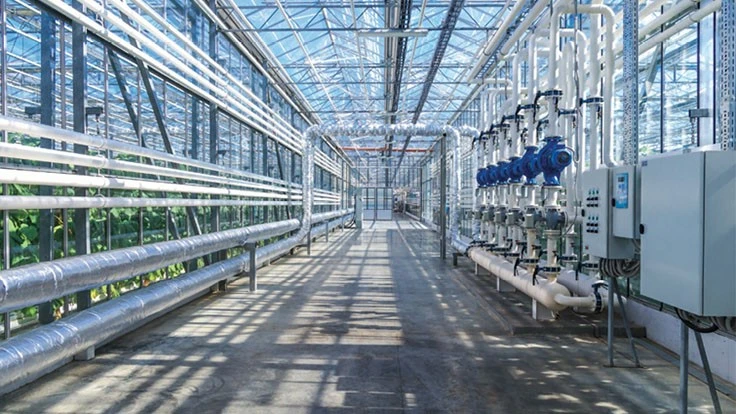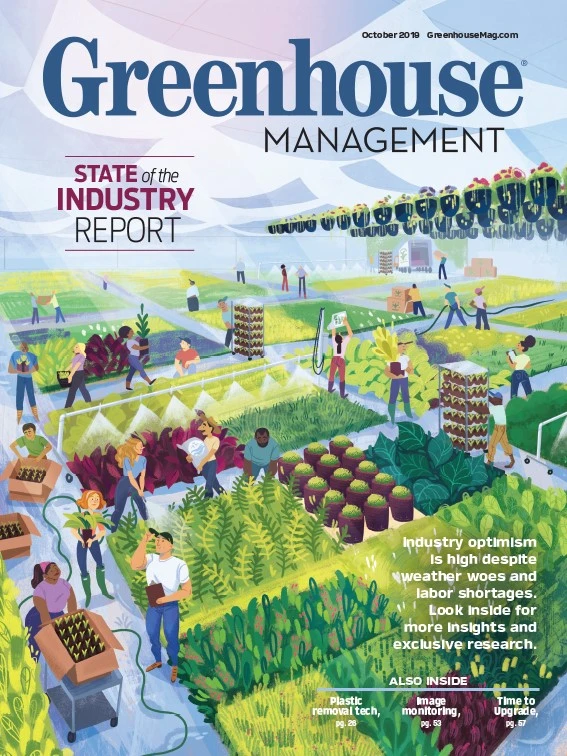

Ryan Dickson, assistant professor at the University of Arkansas, specializes in greenhouse and controlled environmental agriculture. With a background in floriculture production and previous experience as a commercial grower for a greenhouse operation in Denver, Dickson knows his way around the greenhouse, including the advantages of using automated environmental controls.
“There are five main environmental variables that influence plant growth,” Dickson says. “There’s nutrients, water, temperature and gases.” The gases Dickson refers to are oxygen and carbon dioxide, which is what plants need for photosynthesis, he says.
According to Dickson, managing temperature, light and gases is important for climate control, which can be difficult. But with automated controls, the process is more efficient and allows growers to focus on other aspects of growing.
Since plant growth is driven by light and temperature, Dickson says automated environmental controls can save money because they optimize the environment in which the plant grows. With the system, growers can automatically enhance temperature and adjust light levels accordingly. Secondly, since the system is automated, labor costs are essentially reduced since there is no need for manual labor.
However, prior to using automated environmental controls, there are a few things that need to be taken into consideration.
“You need to identify where your problem areas are, like, ‘Is crop loss a result of poor climate management?’ You [also] need to take into consideration the cost of the system and all of the features and where it will add value,” Dickson says, mentioning the price range of automated environmental controls. “… Depending on your operations and what crops you grow, you may not need all those bells and whistles. You just need to match up what you need in order to develop a good crop and find the right unit that fits within your budget.”
Although automated environmental controls are a great addition to production, growers often use them as a crutch, Dickson says. “It’s not a done deal. When you invest in automation, you have to keep calibrating the system.” By this, Dickson means maintaining the wear and tear that comes over time, along with monitoring greenhouse temperatures — as in hot and cool spots. “Your plants will grow differently in those areas and you need to make sure that the system is being maintained and is being calibrated and continues to run properly,” he says.
While automated systems do require some manual sustaining, Dickson still believes the technology is convenient. “It can be very useful in terms of maintaining very strict environmental conditions that will benefit plant growth and I think that’s huge,” he says. “… Being able to maintain proper temperature, proper lighting and cooling is very critical to producing a quality plant.”

Explore the October 2019 Issue
Check out more from this issue and find your next story to read.
Latest from Greenhouse Management
- Grant awarded to test western U.S. wood species for use as wood fiber potting substrate
- Pennsylvania Horticultural Society announces 2025 Gold Medal Plant winners
- Oasis Grower Solutions announces new Southeast territory sales manager
- A nation of gardeners: A history of the British horticulture industry
- Last Word with Angela Labrum, Bailey Nurseries
- Iowa plant supplier Plantpeddler building retail complex
- This month's Greenhouse Management magazine is about native plants and sustainability
- The HC Companies, Classic Home & Garden merge as Growscape





